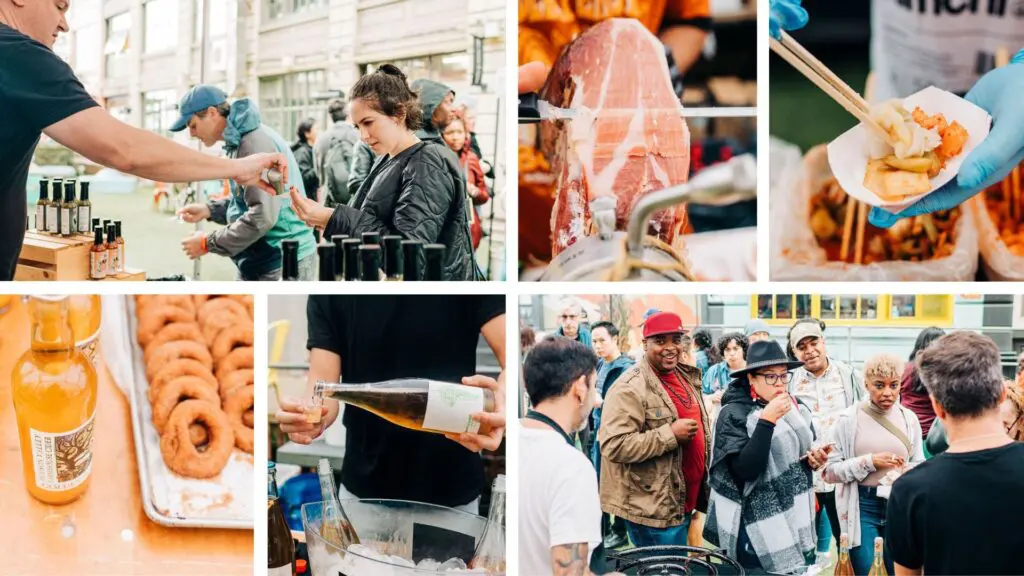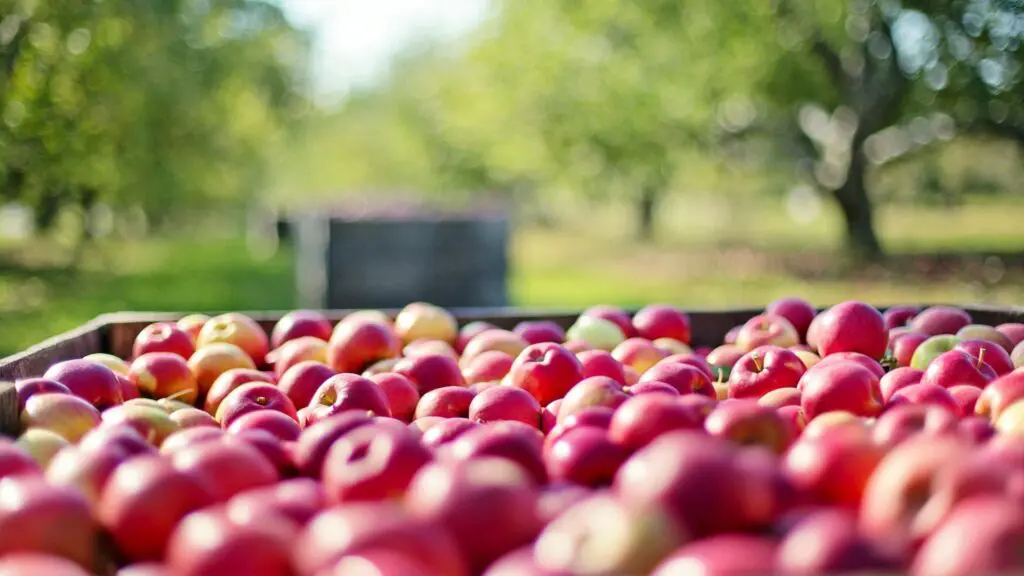Fermentation is a magical science, the process by which something ordinary will, given time and the appropriate temperature, slowly and inevitably transform itself into something sublime. If you want cider, just leave some apple juice sitting out. Ambient yeast and the juice’s sugars will do all the work for you.
But like many things that are easy, making cider is also difficult to do well. Tinkering to refine the final product can be a lifetime’s worth of work, through experimentation with apple blends, additives or aging. Few of those experiments display a more thorough understanding of the biology of fermentation than keeving.
Keeving is the art of naturally creating a cider with residual sugars, which is much more difficult than you might think. When you ferment a cider completely, yeast consumes all the available sugar and leaves you with alcohol — and a dry beverage.
While fine dry ciders are nothing to sneeze at, many cider drinkers also appreciate a touch of sweetness. It’s relatively easy to add artificial flavorings after the fermentation process. But to keeve a cider, the cidermaker instigates a uniquely long, slow fermentation process, which starves the yeast of nutrients before it can consume all the apple juice’s natural sugars.
The process is time-consuming, labor-intensive and has a terrifyingly high failure rate. But when it’s successful, a keeved cider is thought to retain much more of the apple’s terroir than other methods.
THE PLIGHT OF PRODUCTION
Keeving requires a lot of time, money and energy. First, the technique is used most often with heritage bittersweet and bittersharp apples, which are traditionally used for cidermaking in Europe and are in short supply in the United States — and consequently are more expensive.
“The apple itself is an essential part of facilitating a successful keeve,” says Kevin Zielinski, the orchardist and maker at E.Z. Orchards in Salem, Oregon, who is widely known for his top-quality cidermaking fruit. “My own experience, and then looking at the history and practices of keeving, is that it’s usually from cider-producing regions that typically ferment medium to high tannin, [and] low to medium acid juice.”
After the apples are milled, they’re left to sit in their own pulp and skins, anywhere from a few hours to overnight. During maceration, oxygen breaks down the cell walls to release pectin, a naturally occurring gelling agent. Oxidation also browns the fruit, resulting in a juice that is a deeper, richer color.
Once the juice has been pressed, keeving will occur naturally. “The juice from the fruit I grow is capable of a keeve without additions,” notes Zielinski.
However, many cidermakers will add calcium chloride and the enzyme known as pectin methylesterase (PME) at this point to enhance keeving. “The calcium and enzymes are what gets you your nine out of 10 successful keeves, instead of three out of 10,” says Dave Takush, the head cidermaker and co-owner of 2 Towns Ciderhouse in Corvallis, Oregon.
Either way, the pectin in the juice reacts to the enzymes by forming a striking jelly-like substance on the top of the liquid. The French refer to this, well, goopy gunk by the poetic name of le chapeau brun, or “the brown hat” — the stuff that sinks to the bottom is known, less poetically, by the name défécation.
As Takush explains, the jelly matrix acts as a filter. The goopy chapeau brun and défécation are discarded, leaving a juice that is nutrient-deficient and with a very low yeast population.
“The cidermaking skill comes from managing that yeast population, and the most common trick to do so is just transferring the cider from one tank to another tank,” Takush adds. The cider is racked and re-racked. Each time, the yeast blooms and uses up nitrogen until finally, it can no longer replicate and fermentation stops, leaving much of the available sugar behind.
HISTORY GIVES WAY TO THE FUTURE
Given how difficult it is to keeve a cider — the lengthy maceration process, the endless transfers from cask to cask — it’s amazing that the technique exists at all. It’s even more amazing that this technique, which displays such an advanced knowledge of microbiology, was invented long before Louis Pasteur first saw a yeast microorganism through a microscope in 1859.
In the Cider Museum in Hereford, England, Darlene Hayes, cider expert and author of “Cider Cocktails: Another Bite of the Apple” (disclosure: Hayes also writes for Cidercraft), says she found the first references to the process in an appendix to the first edition of “Sylva,” John Evelyn’s famous full comprehensive study on British trees which was published in 1664. In “Discourse of Cider,” Sir Paul Neil describes putting the must in a large vat, and drawing off the liquid from the “flying Lees” and “gross Lees.”
Hayes also found the first use of the word “keeve” in the 1775 appendix to “Sylva.” In “A Treatise on Cyder-making, Founded On Long Practice and Experience; with A Catalogue of Cyder-Apples of Character, in Herefordshire and Devonshire” by Hugh Stafford, he uses the word “keeve” to refer to the vessel that contains the “pounding” of the cider, and describes drawing off the cider from in between a thick crust and the lees sunk to the bottom.
While it may be difficult to find cider drinkers who are familiar with the process, to cidermakers, keeving has long been the stuff of folklore. In the spring of 2017, the Northwest Cider Association won a grant from the Washington Department of Agriculture to take 10 Northwestern cidermakers overseas to learn about the technique.
Many of those cidermakers — from Tieton Cider Works in Yakima, Washington, Seattle Cider Co., Portland’s Cider Riot! and Bauman’s Cider Co. in Gervais, Oregon, just to name a few — are now in the process of developing their own rich and interesting, naturally sweetened ciders.
“The trip was based on trying to find a method, like keeving, to utilize the fruit that we have available here but give it more characteristic,” says Marcus Robert, cidermaker at Tieton Cider Works. Dessert apple varieties, like Gala, Braeburn and Fiji, are very low in acid, which lend themselves to the possibility of keeving.
“We know we can keeve dessert apples, because we’ve done it,” Robert says, who has been experimenting with the method for several years and sells a keeved perry commercially. “Now we just have to find the right blend to do it with.”
TECHNICALITIES OF THE TECHNIQUE
For small cidermakers, the difficulty lies in finding the time, space and money to perfect a technique that can have as high as a three-out-of-10 batch failure rate.
“Even with calcium chloride and PME, it’s not a sure thing,” Takush explains. “Failing one out of 10 times is an extremely high failure rate for a commercial product. In France, it’s not that big a deal because if it’s keeved and it fails, they ferment it to dryness and throw it into a still and make Calvados out of it.”
For many cidermakers and aficionados struggling to master and learn about this ancient technique, the ultimate question remains: Is keeving worth the trouble? Is it a technique with the potential to delight and interest cider drinkers, or something pursued mainly by a handful of cider nerds (and writers)? Why not just add some sweetener and be done with it?
As a few of us sit and sample a half-dozen commercial examples of the technique, the answer starts to become a little clearer. “A mixed-yeast population, long slow fermentation and likely more interesting apples to start with, in particular some with at least a little tannin, will result in an overall more complex drink,” Hayes says.
The ciders vary widely, from straw-colored and sour, to deeply rich, fruity and sweet. Keeving is just one more tool for cidermakers to express their craft and creativity. The fact that it is incredibly cool to look at is just a bonus.
“The first time I created a chapeau brun was the first time I’d ever seen one,” Takush says. “I was just excited that it worked. It was this mythical thing that you hear about… It’s not for everyone, especially at first. But when it’s done right, it can be extraordinary.”
This article originally ran in Vol. 10 of Cidercraft magazine. For the full story and more like it, click here.









